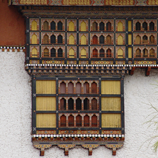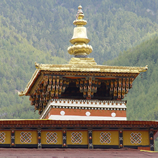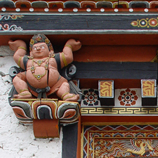


One of Bhutan's most distinctive features is its architecture, which is distinguished by its unusual building methods that do not use iron bars or nails. This unique architectural style can be seen in a variety of buildings, including:
- Chortens
- Temples (Lhakhangs)
- Traditional residences
- Dzongs (fortress-monasteries)
- Remote Goembas (monasteries)
Dzongs and Governance
Bhutan's twenty districts (dzongkhags) are governed by dzongs, which are notably impressive, imposing buildings that frequently dominate important towns. The majority of dzongs formerly had a separate watchtower (Ta Dzong), examples of which may still be seen at Paro and Trongsa Dzongs. However, some have been abandoned, demolished, or repurposed, such as:
- Simtokha Dzong (south of Thimphu)
- Dobji Dzong (south of Chhuzom)
Traditional Houses and Construction
Bhutanese traditional house construction differs according to elevation:
- Higher elevations use simpler stone constructions, occasionally even yak-hair tents.
- Lower elevations prefer bamboo construction.
Classic Bhutanese architecture may be seen in many inner Himalayan homes, which are usually embellished with painted ornaments and carved wooden phalluses.

Religious Structures
Bhutan has a large number of religious structures with a variety of uses. Over 2,000 of these structures are listed by the National Commission for Culture Affairs, of which:
- 1,434 are owned by the government
- 568 are privately held